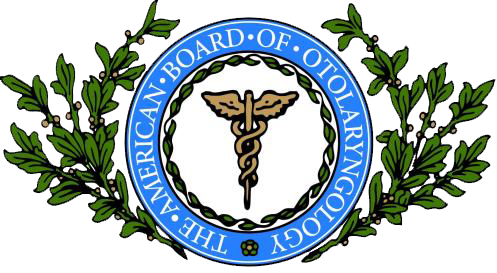
Ear Tubes (Myringotomy)
Ear Tubes (Myringotomy) – About
By the age of five, most children will have experienced at least one uncomfortable middle ear infection called otitis media.
Usually ear infections get better by themselves or are effectively treated with antibiotics (when they are caused by bacteria). But sometimes ear infections can become persistent and chronic which can lead to other problems, such as hearing loss, poor school performance, or behavior and speech issues. In these cases, your child’s doctor may recommend the insertion of an ear tube by an ENT specialist.
Ear tubes are small tubes that are surgically placed into your child’s eardrum to allow air into the middle ear. The tubes, made of plastic, metal, or Teflon, can also be called tympanostomy tubes, myringotomy tubes, ventilation tubes, or PE (pressure equalization) tubes. The tubes are placed to help drain the fluid out of the middle ear in order to reduce the risk of ear infections. During an ear infection, fluid gathers in the middle ear, which can affect your child’s hearing. Sometimes, even after the infection is gone, some fluid may remain in the ear. The tubes help drain this fluid, and prevent it from building up.
Ear tubes come in a variety of sizes, shapes and materials that allow surgeons to best fit the tube to your child, but they’re all designed to create an artificial hole in the eardrum to ventilate the middle ear. They are so small that you usually cannot see the tubes just by looking into your child’s ear. In most cases, ear tubes fall out on their own after about 6 to 18 months, as the eardrum heals. If a tube remains in the eardrum for more than 2 or 3 years, however, it may need to be removed by your doctor.
About one million children each year have tubes placed in their ears. The most common ages are from 1 to 3 years old. By the age of 5 years, most children have wider and longer eustachian tubes (the canal that links the middle ear with the throat area), thus, allowing better drainage of fluids from the ear.
Ear Tubes (Myringotomy) – Diagnosis
Ear tubes may be recommended by your child’s ENT physician if your child has:
- fluid in the ears for more than three or four months following an ear infection.
- fluid in the ears and more than three months of hearing loss.
- changes in the actual structure of her eardrum from ear infections.
- repeated ear infections that do not improve with antibiotics over several months.
Once placed, ear tubes are usually successful in significantly reducing ear infections—or eliminating them altogether. Most children will get one or two infections a year, and the infected pus typically drains on its own, thanks to the opening created by the tubes.
Ear Tubes (Myringotomy) – Treatment
Ear tubes are inserted through a simple surgical procedure called a myringotomy (“my-ring-GOT-amee”). A tiny incision (opening) measuring about 1/20th of an inch is made in the ear drum (tympanic membrane) most often using a surgical microscope and a small scalpel. (about) If an ear tube is not inserted, the hole would heal and close up again within a few days. To prevent this, an ear tube is placed in the hole to keep it open, drain the fluid and relieve the pressure and allow air to reach the middle ear space (ventilation). Insertion of the tubes is usually an outpatient procedure. This means that your child will have surgery, and then go home that same day. When general anesthesia is needed, there are important rules for eating and drinking that must be followed in the hours before the surgery. The surgery takes about 10 to 15 minutes; the recovery can take a few hours. Any hearing loss that was being caused by fluid in the middle ear should return to normal as soon as the fluid is drained. The tubes usually fall out on their own after six to twelve months.
Ear tubes require relatively little follow-up. Usually you and your child will return to your ENT specialist a month after the procedure, then every six months after that, and the tubes usually fall out on their own within nine to 12 months after placement. By that point, most children have outgrown their ear problems and don’t require additional sets of tubes.
Your child’s ENT may prescribe antibiotic ear drops after the insertion of the tubes, to prevent infection.
The tube has a small opening that could allow water to enter the middle ear but some research studies show no benefit in keeping the ears dry. Unless specifically recommended by your doctor, you may not need to restrict swimming or bathing while tubes or in place and may not need to use earplugs, head bands, or other water-tight devices. Be sure to follow the advice of your physician.
Conditions Treated
Follow us


Your Health Starts Here
"*" indicates required fields
